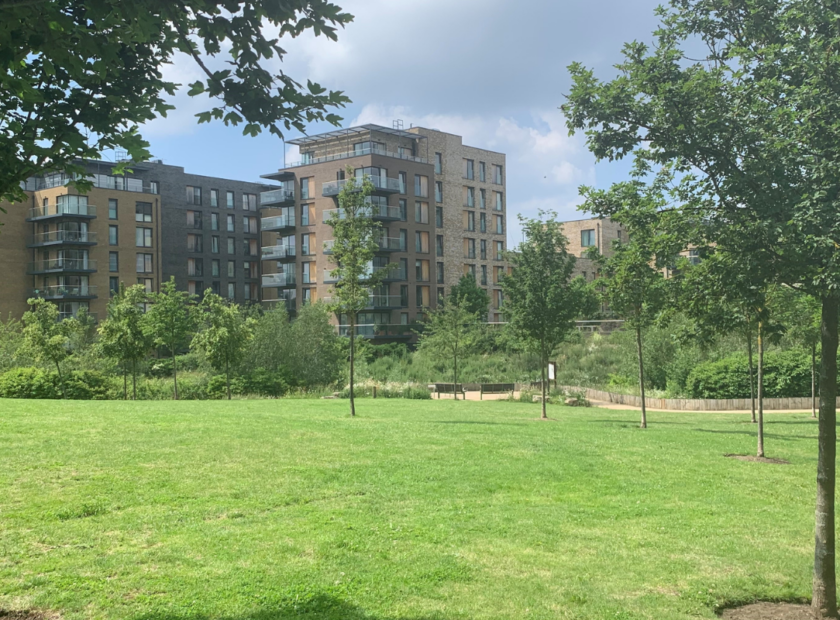As the media interest in yesterday’s announcements dies down, the question remains as to whether government is prepared to listen to the widespread concerns about this complex sketch of a radical new planning system.
The TCPA will produce detailed analysis of the consultation proposals in the coming weeks, but the morning after, there are some important headlines. The first is that the White Paper presents an extremely complex – and in places contradictory – vision of a new planning system. Despite much talk of international comparisons around zonal, code-based systems, the framework laid out in the White Paper can be charitably described as a ‘unique’ hybrid. This is certainly not a Dutch style planning system. In fact, it’s very difficult to discern whether the proposals amount to a system at all because there are no clear descriptions of its overall governance, its legal objectives or its relationship with national strategic planning. For example, the White Paper suggests abolishing the duty to cooperate but is completely silent on any strategic planning regime. That’s quite an omission. At the other end scale there is no clarity at all about how neighbourhood planning would fit into the new code–based Local Plan regime. What power and scope will they have? While there is a great deal of material which stresses the need for things like public engagement and beauty in design, there is a lack of rigour as to how the system will operate in practise which simply makes it difficult to respond to.
The second headline is that evidence to justify the proposed changes is almost completely absent from the paper. As a result, the allegations about the performance of the current planning system are at best partial and simply do not justify the kind of radical change the Prime Minister’s rhetoric is advocating. Because of this lack of evidence, the White Paper focuses on procedural problems that do not exist while ignoring those that do, particularly in relation to the delivery model for new homes, including those for social rent. One crucial piece of evidence is completely absent; that many of the problems of the current planning system result directly from the government’s own reform agenda which has resulted in constant policy changes, underfunding and demoralisation. After 10 years the government seems to take no responsibility for the current system it created and now wishes to demolish.
The third headline relates to the overall test that the TCPA set which was that the White Paper should be clear about the purpose of planning. What is the exam question the White Paper is trying to answer? What are we trying to achieve? Here the White Paper can be best described as confused. There is a lack of a clear direction on how the proposed system will address crucial issues such as health and well-being and climate change. The paper is extremely weak on carbon reduction, pushing zero carbon homes to a non-specific date beyond 2025. There will be no clear legal duty on the purpose of the planning system but the White Paper’s message is that planning is about the achievement of beauty. In one sense, you can’t argue with that objective but the problem is we don’t know what it means in practice. If government wants to have a system with standards set out through codes, then the White Paper should have been clear about the scope of these standards. Instead, the paper is silent on the critical issues for the TCPA that are discussed in the Healthy Homes Act, such as light, space, access to play and freedom from pollution. These ideas are critical to people but do not seem to be included in an idea of beauty based on aesthetics.
In trying to communicate what this White Paper will mean for people, there is at least one piece of certainty. This White Paper will reduce democratic accountability. It will reduce people’s opportunity to be involved in development plans and planning applications. There are three key reasons for this:
- The key decision for the approval of new development will shift to the plan–making stage. The traditional process of politicians deciding planning applications with opportunities for the public to make representations is effectively at an end. Page 20* of the White Paper says this about the process: ‘Our reforms will democratise the planning process by putting a new emphasis on engagement at the plan-making stage. At the same time, we will streamline the opportunity for consultation at the planning application stage, because this adds delay to the process and allows a small minority of voices, some from the local area and often some not, to shape outcomes’. This description is also telling in terms of the government’s attitudes to local people’s opinions.
- The White Paper suggests on page 40* that people’s right to be heard in person will be changed. The paper states that inspectors will now have discretion as to what form an objector’s representations might take. The right to be heard at Section 20 of the 2004 Planning Act is the only clear civil right that exists in the planning process for the individual citizen. The right includes the important phrase ‘in person’ in order to allow an individual to appear in front of an inspector and exercise other opportunities to cross examine witnesses. This opportunity to interrogate the evidence is absent from the major infrastructure regime but crucial to a meaningful opportunity to participate. So, the opportunity to appear at a public inquiry has been replaced with the opportunity for an inspector to have a telephone conversation with you, if they choose to do so. This is not an increase in democratisation. The right to be heard in person is even more important because development plans will become the only meaningful moment for community engagement.
- The White Paper does not provide a single new right for community participation or a single new opportunity for a democratic moment in the plan–making process. There is no basis to the claim that this system will ‘democratise’ planning. The only additional opportunity comes from the White Paper’s hunch that digitising information will encourage community participation. Digital information can potentially lead to a more open debate but it does nothing to give communities control over their future. That is only secured through clear democratic process and through clear individual civil rights.
Because the White Paper does not provide a rigorous and clear framework of how the system is going to work government will no doubt be able to claim that they have been misunderstood. But the tendency to side-line the voice of people and centralise the system a clearly expressed in the intent of this White Paper. These ideas, coupled with the failure to build any form of consensus about the future principles of reform, will mean a bumpy ride before we see new planning legislation in 2021. The TCPA will do everything in our power to shine a light on these changes and campaign for the effective, democratic and progressive planning system this nation needs to secure our future.
*The page numbers of the White Paper that this blog makes reference to link to the designed-up PDF of the White Paper. For page numbers of the web-accessible version, please see page 16 and page 35, para 2.48 (which starts on page 34).




